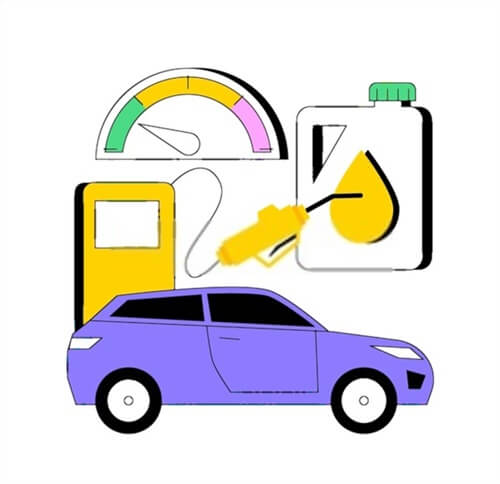If your 2004 Toyota 4Runner has flat tires, you will be unable to move it anyplace. Therefore, you must monitor the condition of the tires. The good news is that the 2004 Toyota 4Runner includes TPMS systems, which monitor tire pressure and alert the driver about low tire pressure.
But what if your 2004 Toyota 4Runner is blinking a tire light? What could be the issue? If your 2004 Toyota 4Runner blinks the tire light, the flashing indicates that the receiver is no longer communicating with all the pressure sensors. This could be due to several reasons that will be discussed in this article.
What Causes the 2004 Toyota 4Runner TPMS Sensors to Lose Communication with the Receiver?
2004 Toyota 4Runner tire pressure sensors are resilient but not impervious to wear and tear. Here are a few potential causes 2004 Toyota 4Runner TPMS sensor to malfunction:
Dead or Low Battery Power
The batteries in your 2004 Toyota 4Runner TPMS sensor can last up to seven years. However, several variables, including how frequently you use your car and the state of the roads where you live, can shorten or lengthen its lifespan. A failing tire pressure sensor battery can result in an unusable device.
Corrosion
Your sensor’s valve stem interior may deteriorate due to dirt accumulation and other issues. This may result in the TPMS sensor ceasing to function correctly or failing.
Tire Replacement
Your 2004 Toyota 4Runner TPMS sensor could occasionally be harmed by changing your tires. Therefore, it is recommended to call an expert to replace your tires if you lack the necessary technical knowledge to do the task.
If you’re using a newer model Toyota then you can check the Toyota Camry tire pressure display (2007-2021)
How to Recognize a Faulty TPMS Sensor in Your 2004 Toyota 4Runner
Here are some methods to spot a faulty TPMS sensor in Your 2004 Toyota 4Runner:
The TPMS Scanner
It is simple to spot 2004 Toyota 4Runner TPMS sensor problems if you have access to a TPMS diagnostic tool. It can identify several issues, including exhausted batteries and wiring issues.
Adding and Releasing Air
Each tire of your 2004 Toyota 4Runner should be inflated to the recommended tire pressure. After that, slowly let the air out of each tire while keeping an eye on the dash display. The sensor could be broken if you let go of pressure in one tire and the system doesn’t activate.
Digital Pressure Gauge
Each tire’s air pressure should be measured and noted. Then, contrast the data with the information shown on the display panel in your car. If a tire’s reading differs from the reading being presented, there may be an issue with the tire pressure sensor in that tire.

While these techniques can aid in 2004 Toyota 4Runner TPMS sensor diagnostics, bringing your vehicle to an auto repair shop is still preferable so that a specialist can make the determination. A mechanic can check to see if the other components of your tire system are functioning correctly and rule out any underlying problems that might produce a similar issue.
If you discover that one of your tire pressure sensors is malfunctioning, replace it immediately. Finding an aftermarket sensor for your 2004 Toyota 4Runner won’t be difficult because they are widely available and supplied at unbelievable prices.
Why is it Important to Replace a Faulty TPMS Sensor on a 2004 Toyota 4Runner?
A malfunctioning TPMS sensor cannot detect low tire pressure. Here are some more negative impacts of driving with low tire pressure, in addition to the increased chance of becoming stranded on the road.
Decreased Fuel Efficiency
Because a flat tire increase rolling resistance, your car’s engine will need to consume more fuel to keep it moving.

Reduced Service Life of Tires
According to experts, a tire’s life expectancy might be reduced by 10% with a tire pressure of 3 PSI below recommended.
Roadside accidents
Low tire pressure has been a factor in numerous minor and catastrophic accidents. This is because low tire inflation can also affect steering and brake performance.
Types of TPMS Sensors
Direct tire pressure sensors come in two different varieties. Let’s examine each kind in greater depth:
Valve Stem-Mounted Sensors
These kinds of sensors operate using the valve stem as their transmitter and rely on a particular nickel-plated valve core to function. The system doesn’t utilize conventional brass. Conventional brass would make the instrument more susceptible to moisture, increasing the risk of deterioration and damage.
However, if you’re facing issues with tore valve stem then here you can check the ways of fixing tire valve stem.
Banded Sensors
These sensors are connected to the wheel drop well and are clamped or banded to hold them in place. Batteries are unnecessary for older banded sensors, such as those found in Corvettes (run-flat tires). On the other hand, modern banded sensors need a battery to operate.
Quick Fix – Toyota 4Runner TPMS Tire pressure warning Light (Must Watch This Video)
Frequently Asked Questions (FAQ)
What to Expect When Replacing TPMS Sensors?
When you bring your vehicle to a tire or auto repair shop, technicians will check to see if your TPMS sensor is operating as it should.
They will either fix or replace any damaged parts in your TPMS system. They’ll probably swap out the sensor’s core, cap, grommet, and bolts, which are all sealing parts.
The sensor will then be “relearned” or programmed into your car’s computer by the mechanics. They will conduct a second check to ensure your tire pressure system is operating correctly.
What is a Tire Pressure Monitoring System Sensor?
The tire pressure monitoring system sensor monitors the tire pressure and transfers the data to the car’s powertrain control module or computer. The data is transmitted using a radio frequency signal.
Typically, a 3-volt lithium-ion battery powers the sensor.
How Do Tire Pressure Sensors Work?
When a TPMS sensor notices that your car is moving faster than 20 mph, it sends a signal.
The sensor enters “sleep mode” when your car isn’t moving, but it sends signals to the car’s computer every hour or every six hours.
The sensor enters “alarm mode” when it notices a sudden change in inflation pressure. Accordingly, a signal will be sent out by the sensor every second. Once the system determines the tire pressure is low, the TPMS warning light will turn on your dashboard.
Final Take: 2004 Toyota 4Runner Blinking Tire Light
If your 2004 Toyota 4Runner is blinking tire light, you need to have its TPMS sensors checked. The various ways to recognize a faulty TPMS sensor have been discussed in this article. If your TPMS sensor is defective, you should have it replaced immediately.

